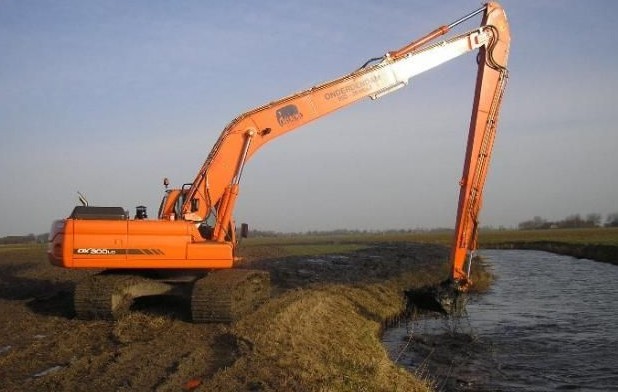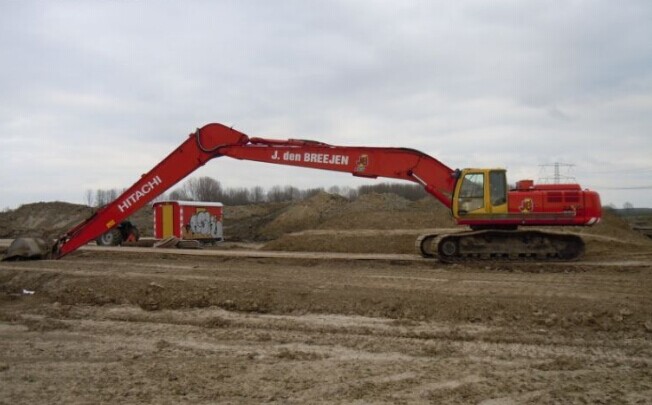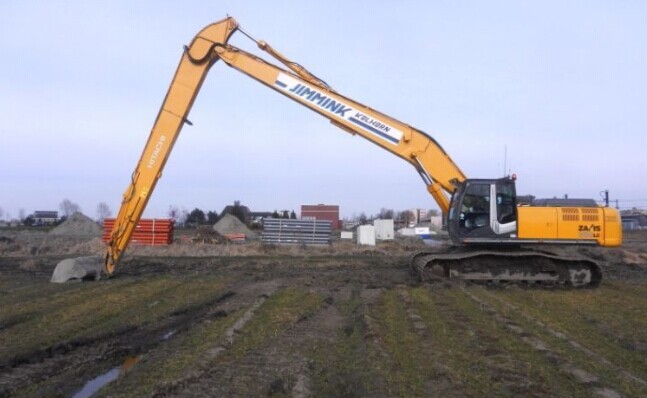 HuiTong
HuiTong  2025-06-13
2025-06-13
Recently, we received a consultation from an excavator master about the failure for excavator boom extension. The fault phenomenon is that the front end of the boom of the excavator boom extension suddenly breaks when the bucket is filled with rocks and is lifting the boom for loading. The theme of this boom is welded by steel plates. The front end of the boom is a steel casting welded to the main body of the boom. The two side plates of the steel casting are connected with the stick pin, and the fractured part is the steel. The side plate of the piece is brittle fracture.
In order to find out the cause of the excavator boom extension break, we helped such masters to carry out a brief analysis on the design, material, casting process, welding and use of the excavator boom extension.

1. Design: According to the national standard GB/T9141-88 "Strength Test Method for Hydraulic Excavator Structure", the strength calculation of the excavator working device is divided into 4 types of soil conditions. We analyzed the 4 types of working conditions and performed the data Analysis, data analysis results tell us that the parameters of this excavator's extension boom are close to the actual design, so the cause of the boom is not caused by unreasonable design.
2. Material: The material used for the front end of the excavating arm is steel casting. Heat treatment has a great influence on the metallographic structure and mechanical properties of the steel casting. We sampled the area near the fracture of the steel casting at the front end of the boom, and tested the chemical composition and mechanical properties. The test results showed that the chemical composition and mechanical properties of the steel casting meet the design requirements.
3. Casting process: We checked the fracture location, which is just right at the location of the runner in the casting process of steel castings. The broken part was cut open, and it was found that there was a depression inside the casting at the runner, and there were traces of repair welding and grinding of the casting by the foundry. After analysis by our designers and technical guidance, cast steel has a high melting point and poor casting performance. After being filled into the model during casting, the cooling rate is faster and the liquid state is shorter, so it has poor fluidity and is prone to oxidation and slag inclusion. The cross-sectional area of the intersection of the runner and the two side walls is the largest, which is easy to form shrinkage defects. When steel castings are solidified, especially graphite is precipitated, the shrinkage is large, and shrinkage microcracks are easy to occur. These slag inclusions, shrinkage holes, micro-cracks and subsequent repair welding are likely to bring hidden quality problems to steel castings.

4. Welding: The main steel plate of the excavating boom is welded to the front end of the boom, and the front end of the boom is welded with a hydraulic pipe clamp. The distance between the fracture position of the steel casting at the front end of the boom and the weld of the hydraulic pipe clamp is about 95mm, and the pipe clamp weld is 8mm fillet weld. Since the main weld is far from the fracture position, the possibility of stress concentration caused by welding defects can be ruled out.
5. Use: The stress on the steel castings at the front end of the excavator boom extension is related to the structure of the working device, the specifications of the boom cylinder and the set pressure of the working device hydraulic system. The hydraulic system pressure will not increase due to the installation of a heavy rock bucket. From the above stress analysis, it can be known that the hydraulic system has an overflow valve for pressure limitation, and the boom will not suddenly break under normal use.
Observe the excavator's poor working conditions on site, with large and small rocks. Therefore, the front end of the boom may be broken due to impact, collision, overload, and misoperation.

After a series of testing and analysis, we also gave the analysis results:
The main reasons for the fracture are as follows: First, the cross runner is too wide during the casting of steel castings, resulting in shrinkage porosity, slag inclusion and shrinkage cavity. The second is the poor toughness of the steel castings, causing stress concentration. The third is the excavator boom extension harsh working conditions on site, impact, collision and misoperation during operation.